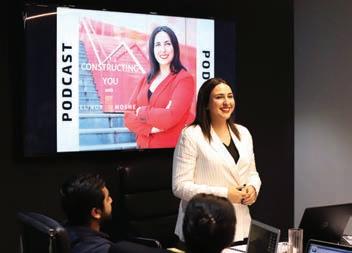What are ‘Superlabs’?
And what makes for a superbly designed Superlabs? Imagine dozens of brilliant scientists and scientists-to-be working side by side in one large, open and fully equipped lab space — a shared space humming with the activity of curious minds as they interact with, learn from and inspire one another. I would describe such a setting as nothing short of super. In fact, as many in the industry know, laboratory facilities that facilitate learning/teaching and the exchange of ideas in a large group environment, as well as potentially running multiple sessions in parallel, are often referred to as ‘Superlabs’.
E
stablished in 2006, the London Metropolitan University’s Science Centre is home to one such Superlabs. At 280 individual workstations, this Superlabs is not only considered one of the largest and most advanced educational science facilities in Europe, but is also often credited as being the first open-plan Superlabs in the world to enable scientific research and learning to be carried out simultaneously at such a scale. HDR is currently working on a number of Superlabs, which while not necessarily an entirely new concept, do constantly offer interesting opportunities to explore and compare teaching pedagogies. The value of such opportunities are reflected in the Australian university sector’s increasing interest in and demand for the benefits of the Superlabs. So what is the major benefit that Superlabs have to offer?
Efficiency
From an academic standpoint incorporating Superlabs teaching space provides the duality of increasing efficiencies and mimicking the real world environment, as institutions and corporations move to larger open
OPINION
Graeme Spencer I Director of Education, Science and Technology
spaces with transparency to the workspace beyond, this environment helps students become better prepared for their future. The multidiscipline academic programs contained within a singular open plan learning environment, hum with the activity of curious minds as they interact with, learn from and inspire one another. With a constrained site and floor plate the Superlabs create huge teaching efficiencies due to its contiguous space, comparative to a cellular traditional teaching lab planning approach. Superlabs more efficiently utilise real estate and support a larger ‘teaching and support’ head count, both of which help maximize cost efficiencies. Design of Superlabs are standardised to provide flexibility in science pedagogies, easily taking the labs from physics to chemistry to biomedicine and more. This allows University to collocate multiple science departments, and also provides for responsiveness to changes in the education program, both of which help maximise cost efficiencies in a very competitive university sector. But while the flexibility of having larger numbers of students sharing a space at any given time may be economically appealing, it won’t count for much if the quality of teaching
47















